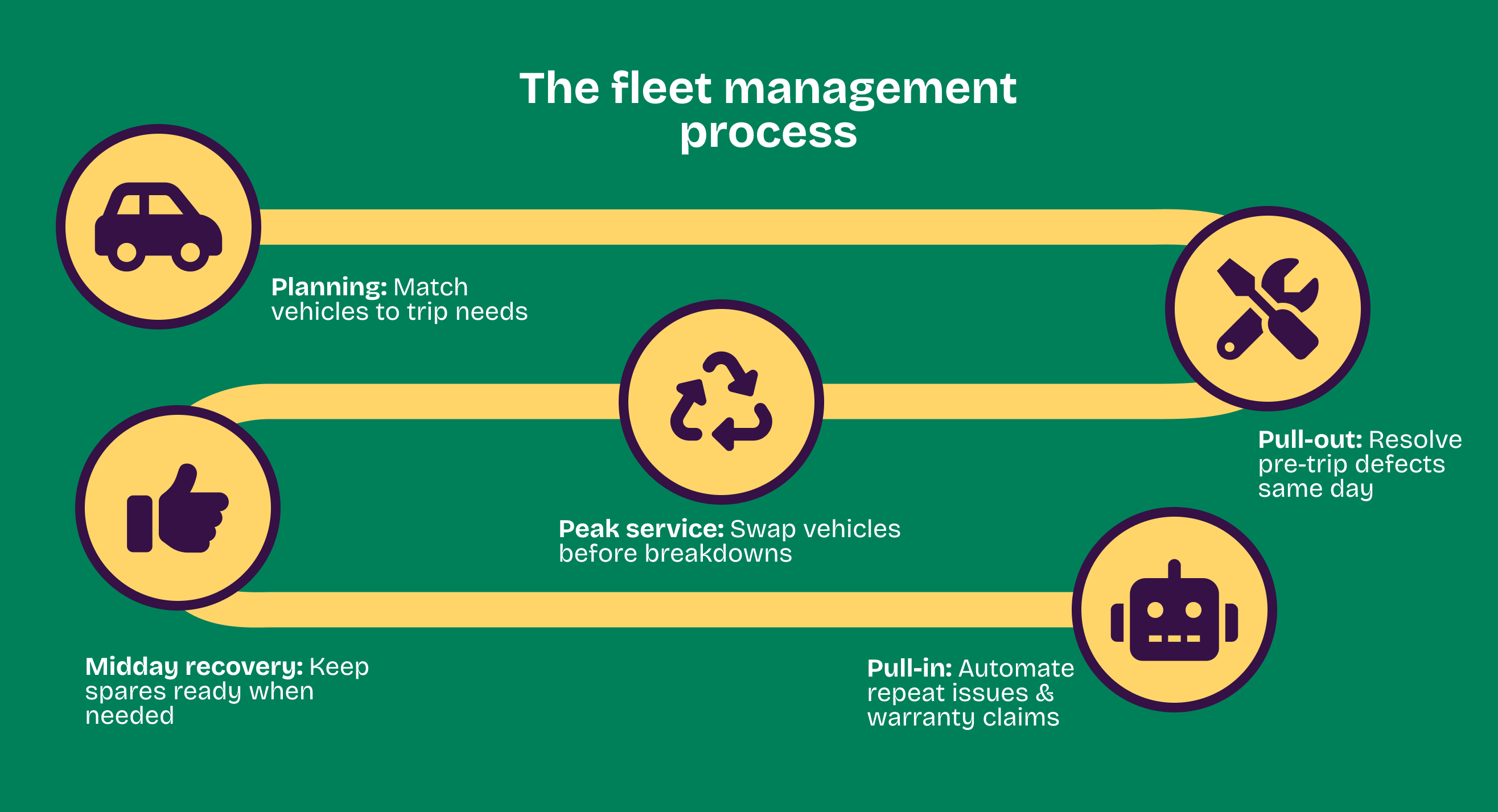How strong fleet health ensures reliable ADA service
.png)
Your garage is more connected to riders than you think
For many transit agencies, Enterprise Asset Management (EAM) systems are seen as behind-the-scenes tools: useful for tracking inspections, parts, and work orders. But in the real world of service delivery, especially for ADA and paratransit, that view is too limited.
EAM should do more than manage the garage. It should support reliable, rider-friendly service from the first pull-out to the last drop-off.
When maintenance is connected to daily operations, the results speak for themselves:
- More vehicles available at pull-out
- Fewer road calls and breakdowns
- More consistent headways and fewer missed trips
That adds up to smoother operations, better real-time information, and a stronger rider experience — especially for those who depend on accessible, on-time service.
The silent disconnect between maintenance and operations
In many agencies, maintenance and operations run in parallel but rarely in sync.
Maintenance teams focus on inspections, defect repairs, and preventive checks. Operations teams handle schedules, blocks, spare ratios, and day-of adjustments. The handoff between the two is often informal and time-based, not built around real-time vehicle conditions.
This disconnect creates familiar challenges:
- Late pull-outs that cascade into missed trips
- Last-minute vehicle swaps that break accessibility plans
- Real-time data that misrepresents what’s actually on the road
The result? Unreliable service, higher operating costs, and growing frustration — both from staff and riders.
How a unified view of fleet health improves service
To fix this, EAM needs to support the full service day — not just the garage. That means connecting three key areas:
- The shop floor: inspections, repairs, parts, and warranty
- Service delivery: pull-outs, change-outs, and on-street recovery
- Rider information: alerts and updates based on real-time vehicle status
When maintenance and operations share a clear, real-time view of every vehicle, decisions get faster — and service gets more consistent.
For ADA riders, reliability starts in the garage
For paratransit riders, even small disruptions can have an outsized impact. A fully integrated maintenance approach helps reduce those disruptions at every stage of the service day:
- Planning: Vehicle needs match trip and accessibility requirements
- Pull-out: Pre-trip defects are tracked, triaged and addressed same-day
- Peak service: Alerts and telematics trigger change-outs before breakdowns
- Midday recovery: Spare vehicles and parts are ready when needed
- Pull-in: Repeat issues are flagged, and warranty claims are automated
The impact? More reliable service, fewer surprises, and better communication with riders.

Start small and build momentum
You don’t need a full system overhaul to start closing the gap between maintenance and operations.
Begin where it matters most: pull-out reliability and peak-period performance. Bring together schedulers, dispatchers, shop leads, and parts managers. Map out a typical service day. Pinpoint the moments where handoffs break down. Then build a 90-day plan focused on:
- Shared workflows
- Aligned data
- Real-time communication
It’s a practical first step toward transforming maintenance from a cost center into a driver of public trust.
That’s how you connect fleet health to rider confidence — one service day at a time.
Ready to close the gap between maintenance and operations?
Spare EAM helps agencies bring maintenance and operations into alignment — so they can deliver safer, more reliable service, every day. Learn more.


Having applications in Spare not only significantly streamlines our application processing, but it also allows us to more efficiently and effectively serve GATRA riders. GATRA can process applications in real time so riders can start using the service right away.
.png)





